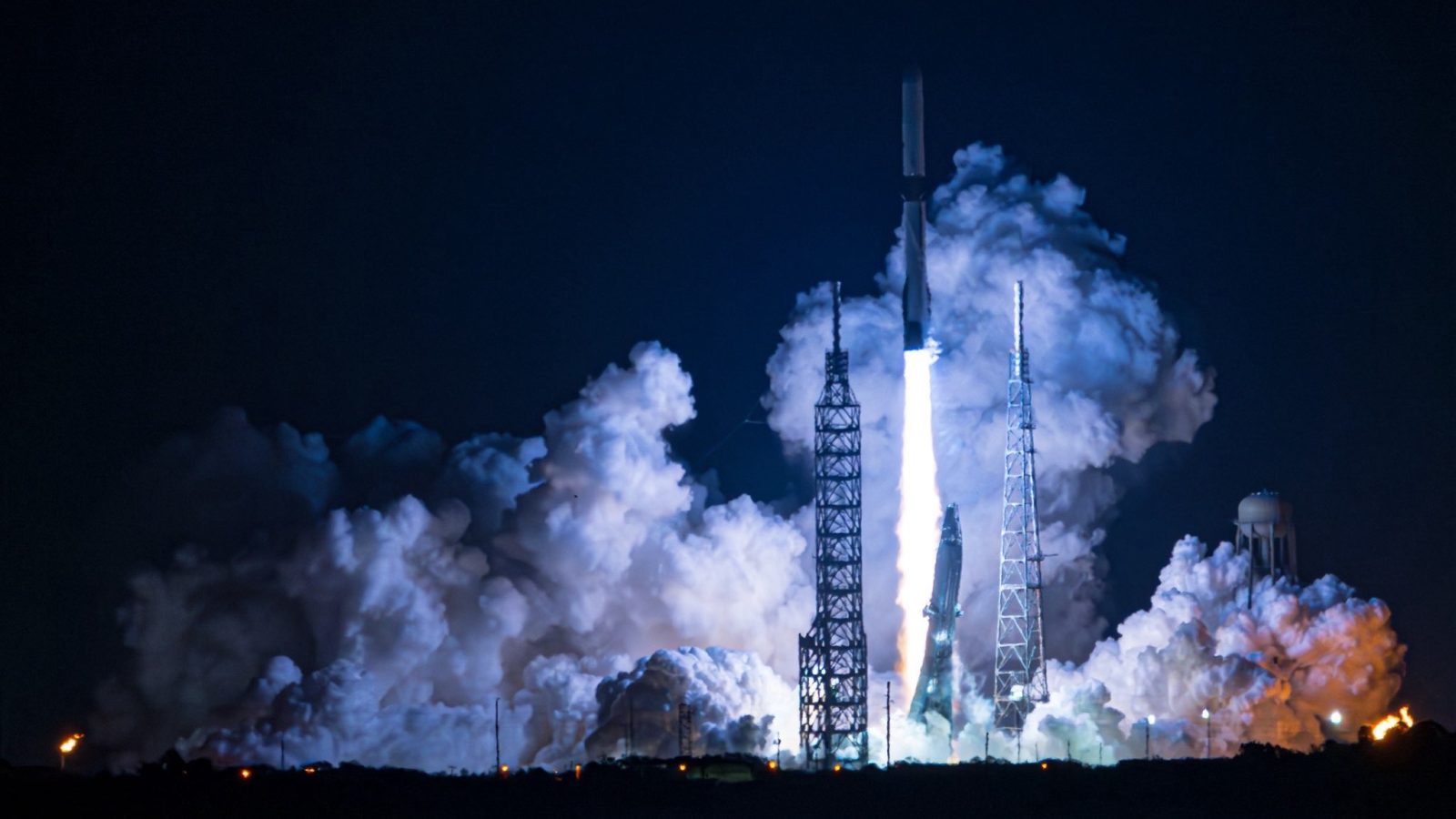
With New Shepard back in service, New Glenn preparing for another flight, and lunar systems advancing, Blue Origin heads into late 2025 with progress on multiple fronts. The company is simultaneously running programs in suborbital tourism, orbital launch, propulsion, and lunar vehicle development, together outlining a transportation architecture that spans Earth orbit to cislunar space.
Suborbital momentum
New Shepard, flying from West Texas, has returned to a regular rhythm after a 2022 anomaly and subsequent review. Since 2024, the system has alternated between human flights and research missions.
In August, NS-34 carried six passengers beyond the Kármán line, adding to the global tally of private astronauts. A follow-up uncrewed payload mission, NS-35, was stood down in August for an avionics issue, but the program remains poised to continue alternating science and tourism flights.
Suborbital flight may not grab headlines like deep-space missions, but it is quietly expanding access to microgravity research and space tourism.
Heavy-lift ambitions
New Glenn, the company’s long-anticipated heavy-lift rocket, achieved orbit on its first flight in January 2025. That mission deployed a small payload and an experimental Blue Ring pathfinder. However, the booster was not recovered after a landing burn anomaly.
The Federal Aviation Administration closed its anomaly review in March with corrective steps in place. Blue Origin is currently aiming for a second New Glenn flight in the last quarter of 2025, carrying NASA’s twin ESCAPADE (Escape and Plasma Acceleration and Dynamics Explorers) Mars probes.
Beyond that, New Glenn’s manifest includes Amazon’s Project Kuiper satellites, NASA science missions, and national security launches. It is a rocket now moving from blueprint to operational queue.
Powering New Glenn are Blue Origin’s BE-4 methane-oxygen engines. They are also used on United Alliance’s Vulcan rocket, most recently on a U.S. Space Force mission in August 2025.
With BE-4s now in regular service, Blue Origin has become both a launch provider and a propulsion supplier, embedding its technology directly into the U.S. launch ecosystem.
Lunar reach
Blue Moon landers form the backbone of the company’s lunar program. NASA awarded Blue Origin the Artemis 5 Human Landing System contract in 2023, and work continues on that crewed lander. In parallel, the company is preparing its smaller Blue Moon Mark 1 cargo lander for a demonstration flight as soon as late 2025 or early 2026.
This summer Blue Origin also introduced “Transporter,” a cryogenic tanker designed to move propellant in cislunar space. These vehicles are designed to work together – landers, tankers, and launch vehicles creating a repeatable lunar transport loop.
Orbital transport
Blue Ring, first tested in pathfinder form on New Glenn’s debut, is intended as an orbital transfer vehicle capable of satellite repositioning, payload hosting, and cislunar delivery. Its first operational mission is scheduled for 2026, carrying Scout Space’s Owl space-domain-awareness payload.
If successful, it will serve as connective tissue between New Glenn launches and Blue Moon landers, extending Blue Origin’s reach beyond low Earth orbit.
Commercial outpost
Orbital Reef, the proposed commercial space station developed with Sierra Space and partners, continues as part of NASA’s Commercial Low Earth Orbit Destinations program. The U.S. space agency reported steady progress in 2025, and in June the European Space Agency signed a memorandum of understanding to explore collaboration on the project.
Although timelines depend on funding and milestones, Orbital Reef remains active, positioning itself as a potential successor to the International Space Station, scheduled for retirement and deorbit after 2030.
Operational growth
Contracts and customers illustrate the shift from concept to service. In April 2025, the U.S. Space Force awarded Blue Origin seven missions through 2029 valued at about $2.3 billion, marking its entry into large-scale national security launch. Meanwhile, Amazon’s Kuiper constellation remains a cornerstone commercial payload for New Glenn, alongside NASA science flights.
Culture and organization are evolving to match this broader mission. Under CEO Dave Limp, Blue Origin reduced its workforce by roughly 10% in early 2025, described as a pivot from wide-ranging research and development toward scaled manufacturing and higher launch cadence.
Facilities now map directly to product lines: research and development at the Kent, Washington, headquarters; New Shepard launches in West Texas; New Glenn and factory operations at Cape Canaveral, Florida; and engine and lander production in Huntsville, Alabama. The shift reflects a company moving from conceptual work to repeated operations.
What’s clearer in 2025 is the breadth of Blue Origin’s work appearing together – suborbital flights, orbital launches, engines, lunar landers, orbital tugs, and a space station project – showing the company’s architecture as a whole in motion.
FTC: We use income earning auto affiliate links. More.




Comments